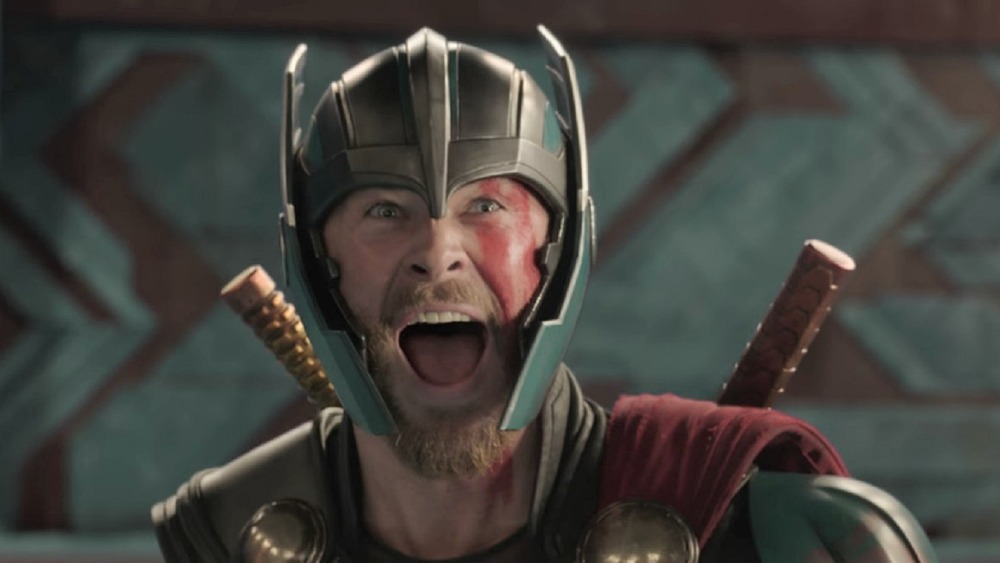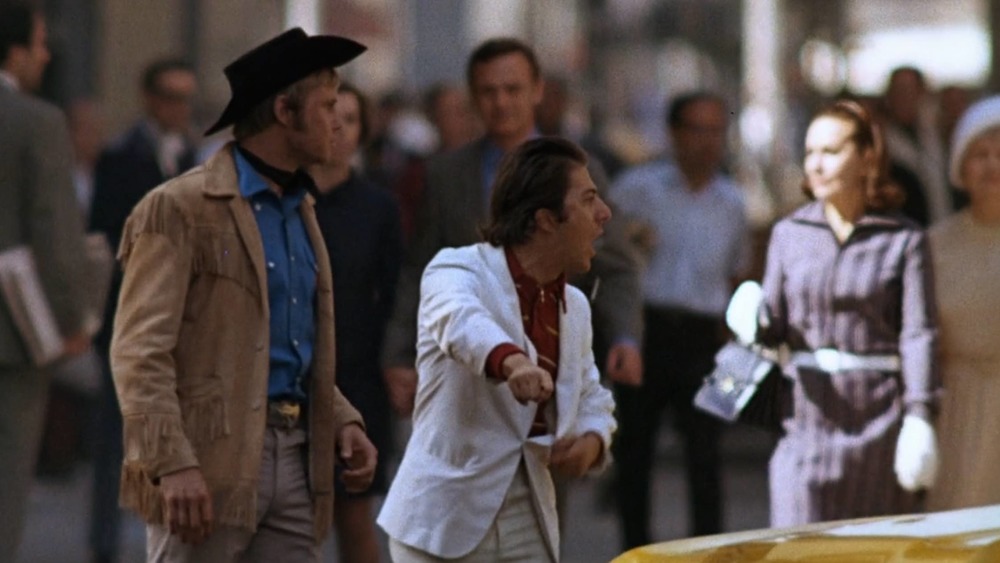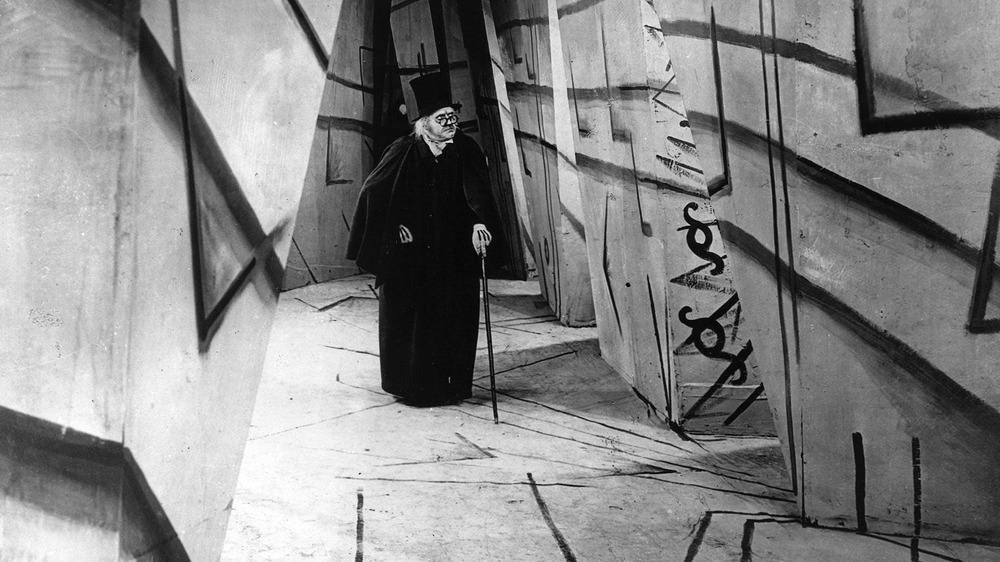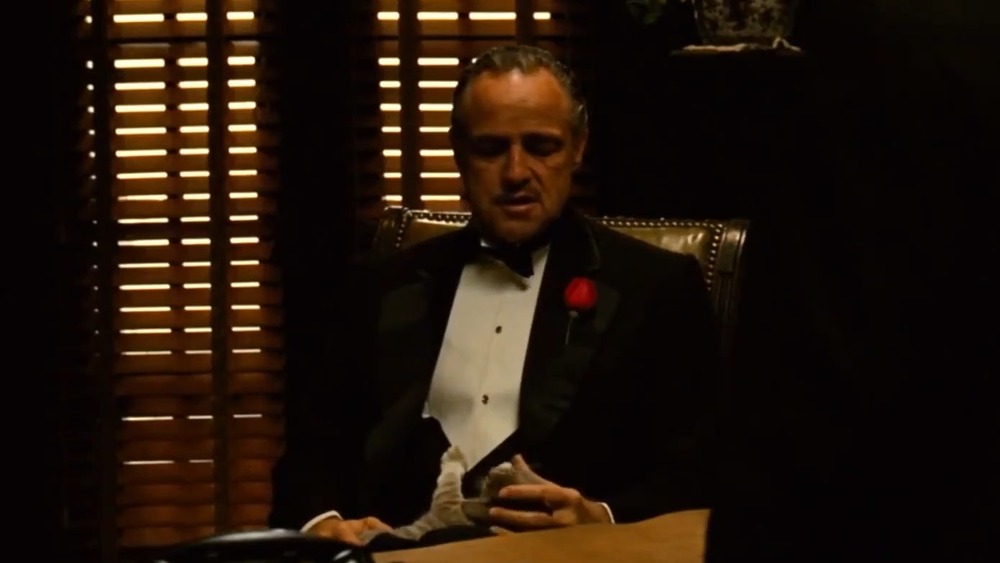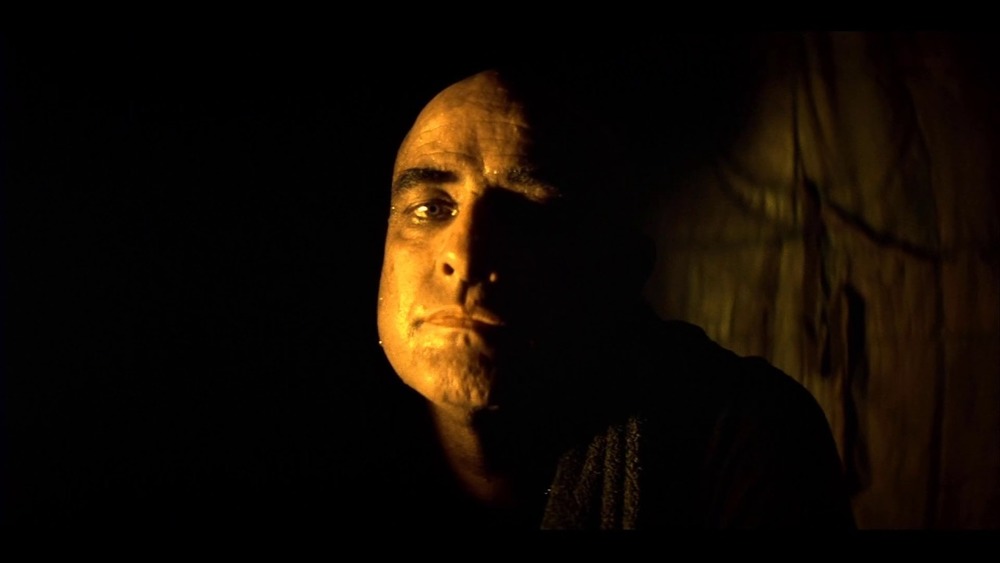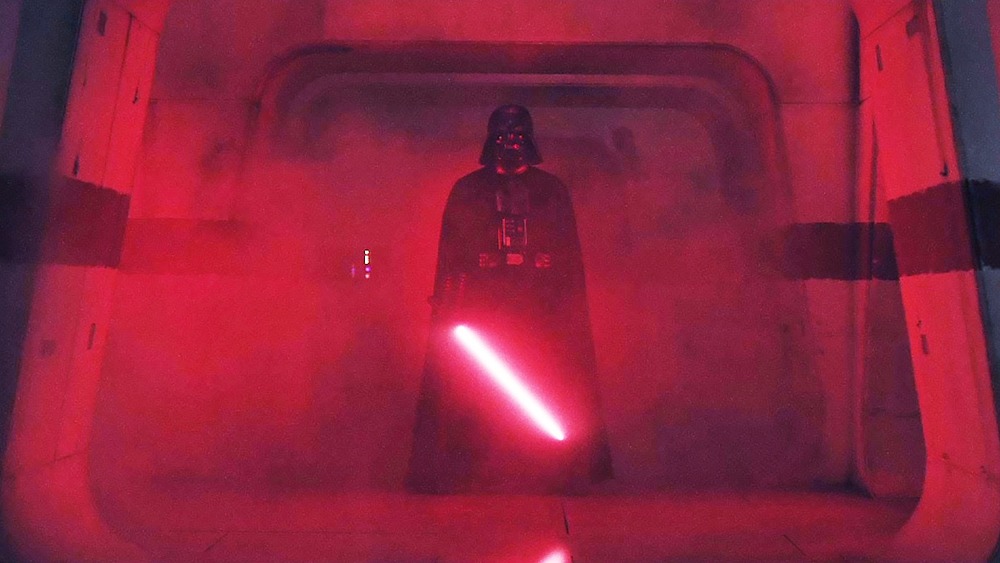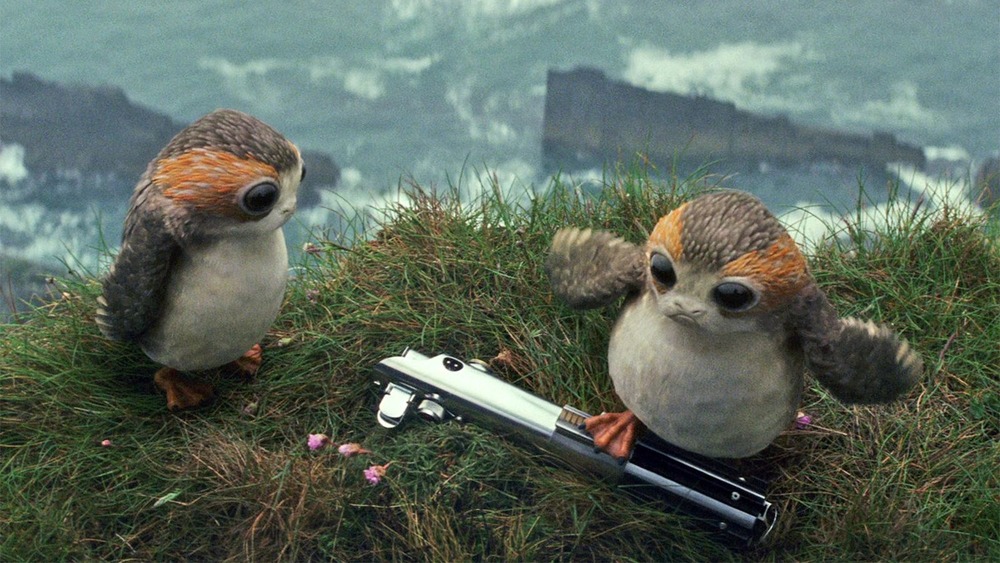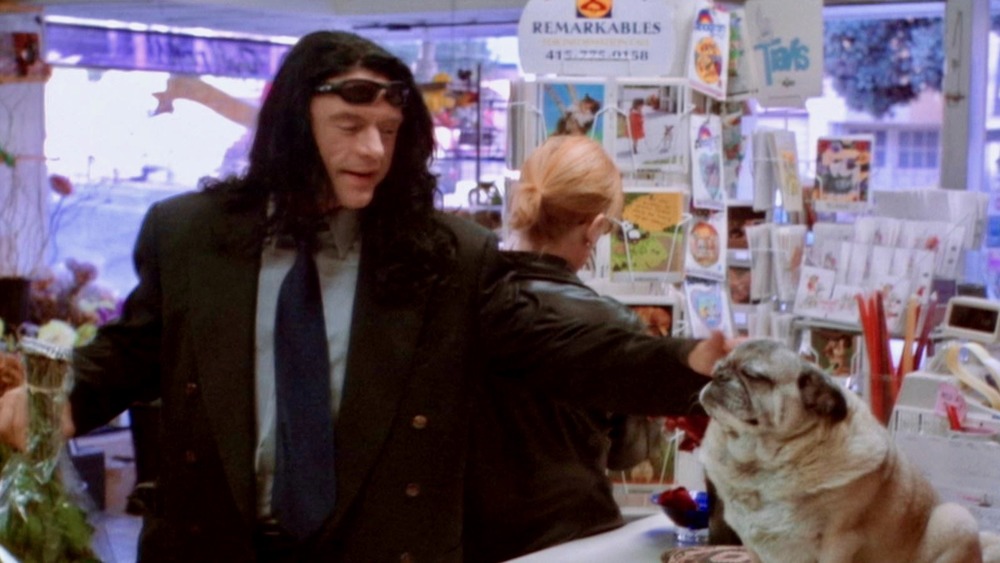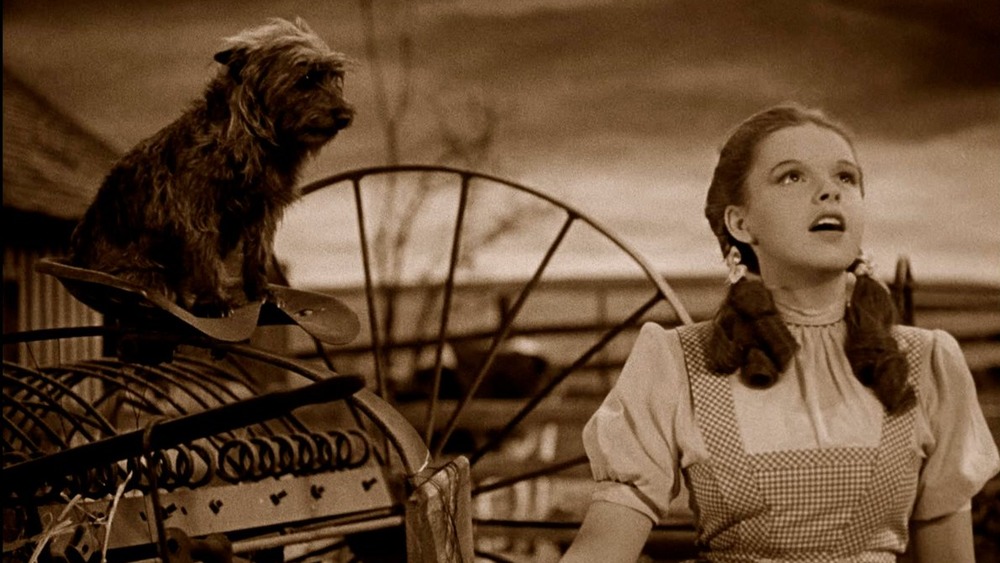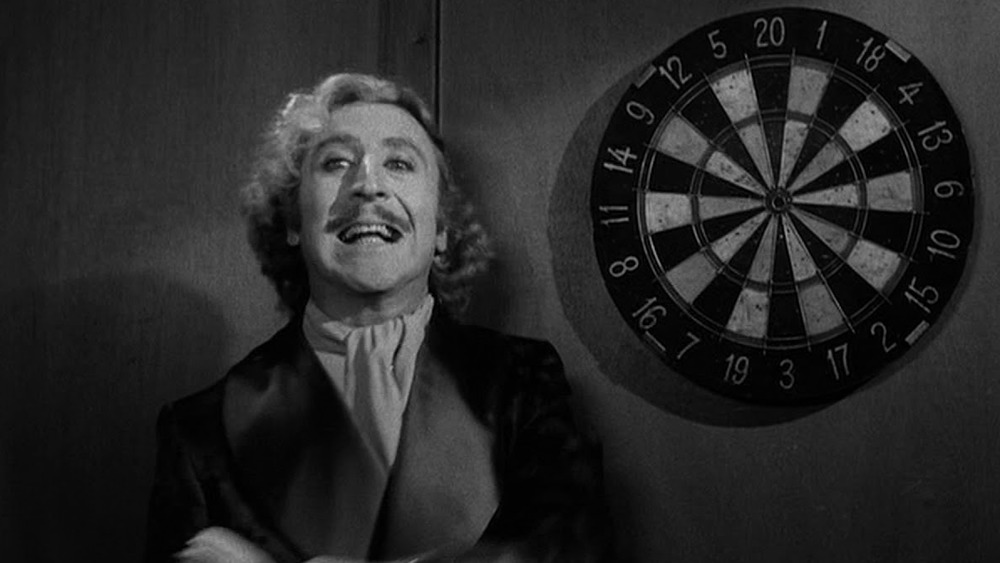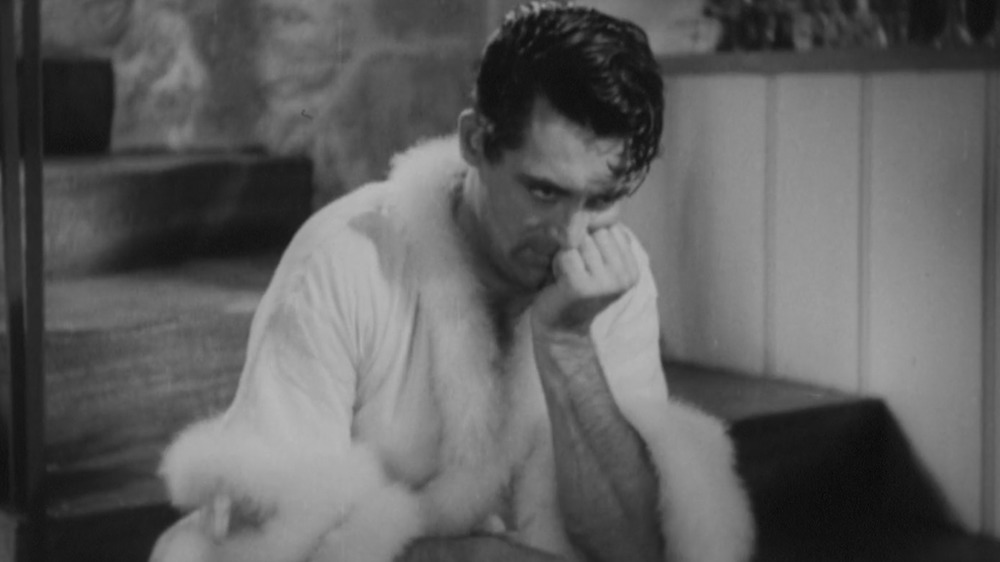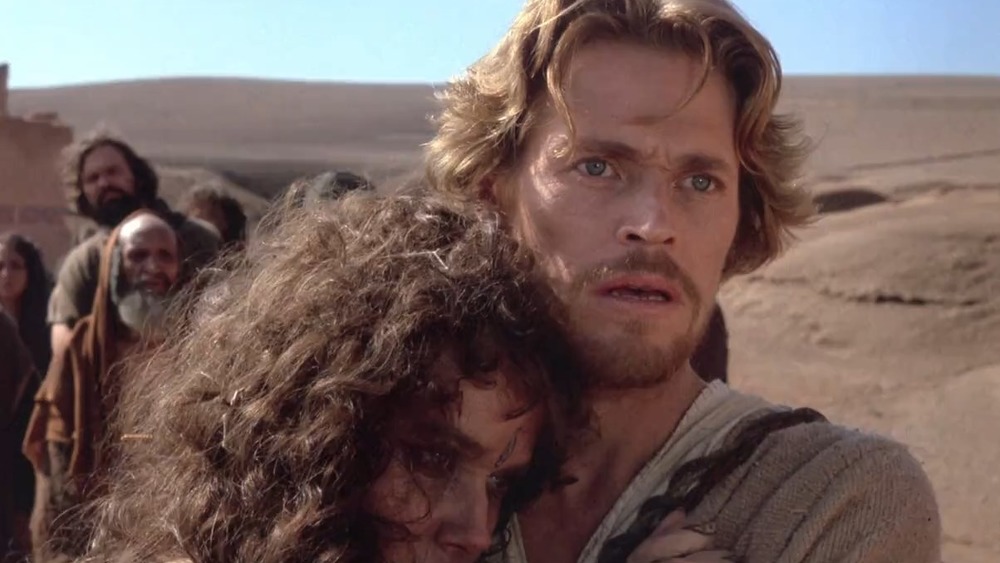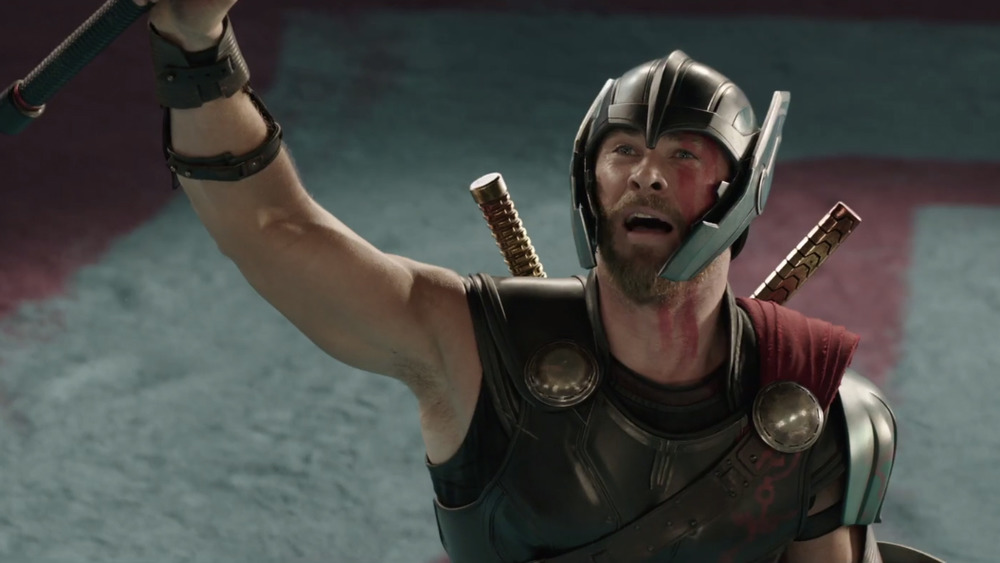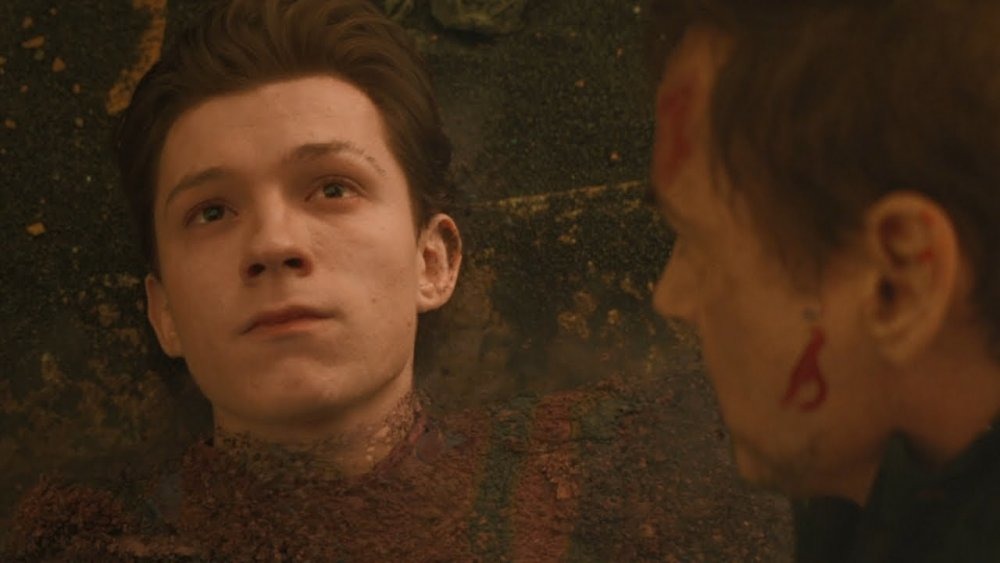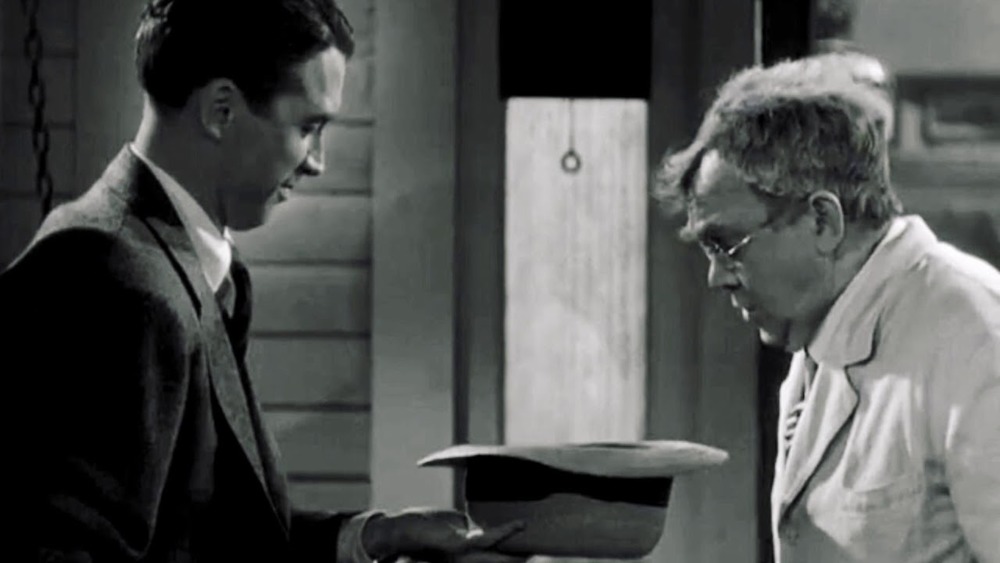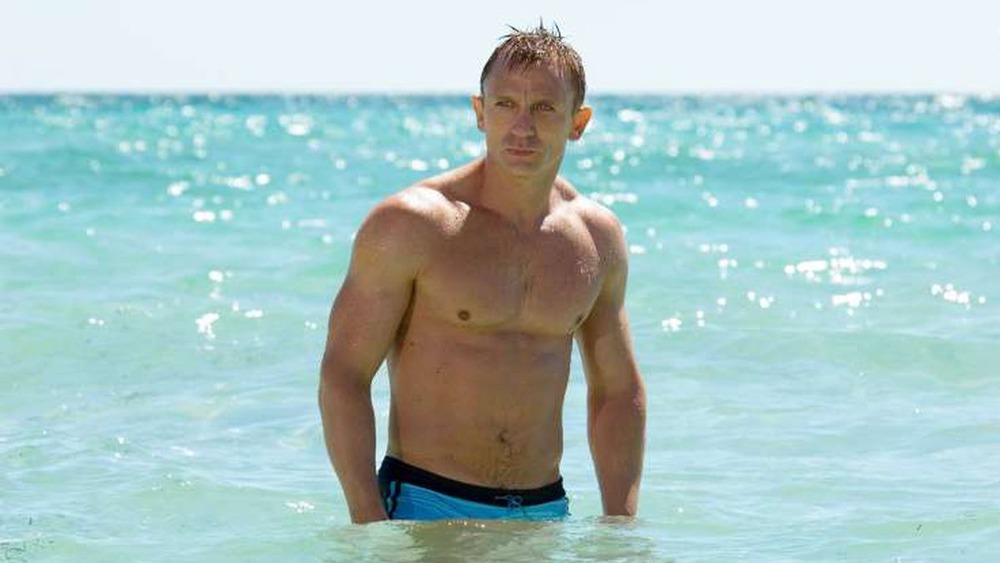The Greatest Movie Scenes That Almost Never Happened
A lot of us like to think movies spring fully formed from the imaginations of great filmmakers. If not that, maybe you enjoy the thought that it's the results of filmmakers working their hardest to reshape reality around their visions.
But the truth is, every movie requires so many people and resources to get funded, made, edited, and released that it's almost a miracle any of them ever reach the screen at all. There are so many variables at play that many of the best moments in the best movies are the result of random chance, or they're one random event away from never happening at all. Sometimes an actor comes up with the perfect line in the middle of filming. Sometimes a producer steps in at the last minute to make a suggestion. Sometimes circumstances beyond the filmmakers' control force them to improvise on the spot. And sometimes a scene comes together for reasons no one could've predicted.
Take out any of those variables, and the scene doesn't exist, and in many cases, that'd be a great loss. It'd be hard to imagine movie history without the moments in this list. But all of them came this close to never happening at all.
(Warning — there are some spoilers below.)
Midnight Cowboy's most famous moment was the work of a bad driver
In 1969, Midnight Cowboy expanded the subject matter a Hollywood movie could handle, exploring the grittier, seamier side of New York City through the eyes of Jon Voight as an escort and Dustin Hoffman as his pimp. It's fondly remembered for many reasons, but there's one scene in particular that's become the signature of Midnight Cowboy and New York itself. While taking Joe Buck (Voight) across town, Ratso Rizzo (Hoffman) nearly gets run over by a cab. Most of us would be shaken, but Rizzo slams on the hood and yells, "I'm walkin' here!"
It's an iconic moment that's been referenced everywhere from Rick and Morty to Buffy the Vampire Slayer. But if things had gone according to plan, it might not have happened at all. As Hoffman told the National Post, "It was a low-budget movie. ... Consequently, on Sixth Avenue, there was no money to stack it with extras. ... The first take a cab jumps the light ... I wound up saying, 'I'm walkin' here!' But what was going through my head is, 'Hey, we're makin' a movie here! And you just [expletive] this shot up.' But somehow something told me, you'd better keep it within the character."
To Hoffman's surprise, director John Schlesinger loved the ad-lib and told him to redo it every take. This means there's some disagreement about whether it was an ad-lib, but the most likely explanation is in the middle — Hoffman improvised the line and then reused it for the take that appeared in the film, complete with an extra driving a different cab.
The producers of The Cabinet of Dr. Caligari accidentally invented the twist ending
Let's go back to the beginning. In 1920, director Robert Wiene brought the Expressionist art movement to the screen in The Cabinet of Dr. Caligari, a dark story of an evil psychologist who poses as a carnival magician and his sleepwalking henchman, one set in a nightmare world of long shadows and jagged, crooked buildings. In the process, Wiene created the prototype for the modern horror movie and a visual style that still influences everything from Beetlejuice to The Babadook. It also has one of the earliest twist endings, with a shocking conclusion that reveals that the movie's hallucinatory world really is a hallucination. The characters are actually mental patients, and the mad scientist is their doctor.
It's the kind of shocking recontextualization of everything we've seen before that anticipates classic moments like the ending of The Sixth Sense and the finale of Shutter Island. It's also nowhere in the original script. In fact, the screenwriters threatened to sue the producers for adding it. They said it turned an anti-authority film, where the doctor is sicker than his patients, into a pro-authority one. It seems likely those political implications scared the producers. The prospect of selling the revolutionary aesthetics must've also been daunting, so Fritz Lang, the great Expressionist filmmaker behind M and Metropolis, suggested a realistic frame story to make Wiene's psychedelic fantasy more palatable. For good or for bad, Caligari's last-minute twist is one of its most memorable moments, and movies as we know them would be very different if the producers hadn't stepped in.
Francis Ford Coppola picked up a cat, and The Godfather was born
Francis Ford Coppola launched his career and a whole bunch of others with his Oscar-winning blockbuster, The Godfather. That included relaunching the career of '50s star Marlon Brando, who got the most iconic role of his filmography as the Mafia patriarch Don Vito Corleone. Even if you haven't seen the film, the character should be instantly recognizable, with his swollen cheeks, thin mustache, and the cat he strokes in the memorable opening scene. In it, he's sitting in his office during his daughter's wedding, and according to Mafia tradition, he can't refuse any request on this special day. And so, a man begs Vito to send some goons to rough up his daughter's rapist.
That violence lurks behind their conversation about etiquette, and Vito's affectionate handling of the adorable kitten sums up the contrast. It's hard to imagine the scene without the cat, but it was never part of the plan until the feline introduced itself onto the set. In fact, Coppola described the cat's presence as a spur-of-the-moment decision, saying, "I saw the cat running around the studio and took it and put it in [Brando's] hands without a word." Brando apparently didn't miss a beat and made it an inseparable part of his performance. The crew had more trouble, though. The cat purred so loud it nearly drowned out Brando's lines, and some technicians were worried they might need to add subtitles!
Marlon Brando stayed in the shadows in Apocalypse Now to hide his weight
Apocalypse Now is remembered now as one of the greatest movies ever made, but in the many years it took Francis Ford Coppola to complete his Vietnam War epic, it seemed destined to be nothing but a disastrous, career-ending embarrassment. Translating Joseph Conrad's novel Heart of Darkness from the Congo to Nam, Apocalypse Now sends Captain Benjamin Willard (Martin Sheen) up the river to find out what happened to the rogue colonel William Kurtz (Marlon Brando). It takes until almost the end before we finally see Kurtz, and when we do, he's an unforgettably menacing presence, constantly hidden in deep, dark shadows beautifully photographed by Vittorio Storaro.
As memorable as those images are, they're not there to just look good. By the time Coppola filmed his scenes with Brando, the production in the Philippines had already survived seemingly every possible disaster. The sets were destroyed by a typhoon, Sheen had a heart attack, and the four-month production had stretched out over more than a year. Coppola's troubles weren't over when it came time to film Brando's scenes. Brando arrived in the Philippines weighing much more than Coppola expected, and the actor was very self-conscious about it. But Brando worked with the crew to create a series of workarounds to avoid showing his weight on-screen, hiding it in shadows, filming him mostly in close-ups, and using a body double, all solutions that made Kurtz a far more memorable character than he would've been if things had gone more smoothly.
Rogue One's Darth Vader scene was way less scary before reshoots
When Rogue One: A Star Wars Story came out, fans enjoyed the story of a team of Rebel guerillas stealing the plans for the Death Star, but what they really couldn't stop talking about was a scene near the end where Darth Vader boards a Rebel ship to get them back, carving his way through soldier after soldier like a horror movie villain. Before we even see him, we hear the familiar, nightmarish sound of his machine-assisted breathing in the dark. Then, he's hellishly illuminated in the red glow of his lightsaber, and he begins mowing down the Rebels. He shrugs off laser blasts and disarms and thrashes the good guys without even touching them. One frantically bangs on the door, begging for help, and many viewers felt his terror. After the disappointment of his underwhelming origin story in the prequels, this moment was a potent reminder to fans of why they loved the Sith Lord in the first place.
And they almost never got to see it. Editor John Gilroy told Yahoo! News that the scene wasn't added until after the primary shoot was finished. That was when he came in to put together the new footage his brother, Tony, had shot along with director Gareth Edwards. One of their goals was to reshape Vader's role. Edwards had originally conceived of him as a threatening background presence. But in the reshoots, he and the Gilroys realized that threat needed to pay off. And it certainly did, with a scene that still terrifies fans years later.
The Last Jedi wouldn't have Porgs without puffins
Everyone loves Baby Yoda and the Ewoks, but there's still no Star Wars aliens more adorable than the Porgs. The cute little critters that infested Luke Skywalker's island hideaway became a merchandising bonanza, selling millions in everything from stuffed toys to T-shirts. But they would never have appeared if nature hadn't stepped in.
Concept artist Dave Lund told StarWars.com that Luke's scenes were filmed on the Irish island of Skellig Michael, which is also a wildlife preserve. This meant that nearly every shot had a bunch of puffins hanging around. It was illegal to shoo them away, and digitally erasing them would've been too expensive, so director Rian Johnson commissioned Lund and the other designers to come up with a more Star Wars-friendly creature that the effects artists could replace the puffins with.
Lund says they eventually came up with something that "was influenced by a seal and a pug dog and the puffin. The big eyes of a seal or the big eyes of a pug dog and the sort of funny, ugly face." Adding to the puffins instead of subtracting them turned out to be the right choice, and now the Porgs are a beloved part of Star Wars lore. And it's all because one of the biggest media corporations on Earth couldn't control some pudgy little sea birds.
A fat pug inserted itself into The Room
The Room has developed a reputation as not just one of the worst movies ever made but one of the most fascinatingly bizarre, too. Writer/director/star Tommy Wiseau seems to exist in a different reality from the rest of us, and few scenes show that better than the one where his character, Johnny, goes to pick up some roses for his girlfriend, Lisa. Johnny has a head-spinningly rapid-fire conversation with the florist, full of baffling dialogue ("That's me!"). It all builds up to one memorable and meme-able moment where he says, basically all in one breath, "Here you go, keep the change. Hi, doggie." And then he pets an ugly little pug sitting on the counter.
Not only was the pug not in the script, Wiseau had already done multiple takes without even seeing it there. In his book, The Disaster Artist, Wiseau's costar Greg Sestero remembers, "It wasn't until one of the very last takes that Tommy noticed something that none of us had, which was the tiny pug dog sitting on the counter. The little guy hadn't moved at all since we'd come in. Not once. He just sat there, motionless. When Tommy finally noticed the dog, it was in the middle of a take. Going with it, Tommy patted it on its tiny, wrinkly noggin and said, 'Hi, doggie,' and walked away." Then again, maybe it isn't surprising. Could anyone really write a scene that strange and awkward?
'Over the Rainbow' narrowly escaped the cutting room floor
The Wizard of Oz is one of the greatest classics to ever come out of Hollywood, and "Over the Rainbow" is one of the biggest reasons for that. Judy Garland's heartfelt performance of the song by Harold Arlen and E.Y. Harburg made her a star. It won an Oscar for Best Original Song, and it was named the Song of the Century by the Recording Industry Association of America and the National Endowment for the Arts. It became an essential part of LGBT+ culture — would "Friends of Dorothy" or even the rainbow flag exist without it? And Israel Kamakawiwoʻole's cover has become Hawaii's unofficial national anthem.
So you have to imagine all the naysayers who wanted it out of the film felt pretty silly. But before The Wizard of Oz's nationwide premiere, the producers cut it from test screenings, claiming it slowed the movie down and that they were embarrassed to see Garland sing in a barnyard. One of them believed in the song, though. Arthur Freed reportedly told MGM's big boss, Louis B. Mayer, "The song stays — or I go." Mayer's response wasn't the most enthusiastic: "Let the boys have the [expletive] song. Put it back in the picture. It can't hurt." But it's hard to disagree. Including one of the most beloved songs of the 20th century certainly didn't hurt The Wizard of Oz, even if that's an awfully understated way to put it.
Mel Brooks added a yowling cat to Young Frankenstein — and he played it!
Director Mel Brooks followed up his Western-spoofing Blazing Saddles with an even more successful take on the horror genre in Young Frankenstein. Here, he reteamed with Gene Wilder, who played Frederick Frankenstein ("It's pronounced 'Fronkensteen!"), a successful American doctor who wants nothing to do with his family name until he's called back to the ancestral castle in Transylvania, where he ends up recreating his grandfather's famous experiment.
Like all of Mel Brooks' spoofs, Young Frankenstein packs in hundreds of gags. In fact, there are so many that Brooks ended up throwing in more on the fly. In one scene, the local police inspector unexpectedly drops in on Frederick just after he's reanimated the monster. Frederick tries to distract the inspector with a friendly game of darts, but the conversation gets tense when the inspector brings up the question of Frederick's monster-making heritage. So tense, in fact, that Frederick ends up throwing his darts everywhere but the dart board. One of them apparently hits a cat, who lets out a hilarious scream.
That was all Mel Brooks, who threw in the sound effects from off-screen. He also appeared earlier as a howling wolf when Frederick arrives in Transylvania. ("Werewolf?" "There wolf. There castle.") These animal-themed ad-libs were actually the only way Mel Brooks could appear. He told The A.V. Club, "That was the deal Gene Wilder had. He says, 'If you're not in it, I'll do it.' ... He says, 'You have a way of breaking the fourth wall, whether you want to or not.'"
Bringing Up Baby's funniest line was an ad-lib
Bringing Up Baby is one of the funniest movies ever made, and it's certainly one of the funniest to ever come out of Old Hollywood's "screwball" genre. Master filmmaker Howard Hawks directs Cary Grant as Dr. David Huxley, a nerdy paleontologist who gets into all kinds of shenanigans on the eve of his wedding as bored rich girl Susan Vance (Katharine Hepburn) decides to seduce him with some help from her pet leopard, Baby.
One of David's many indignities leads to his clothes getting ruined, so he has to borrow a robe from Susan, who has nothing but a hilariously fuzzy, feminine thing for him to wear. This becomes an even bigger problem when he receives a visit from Susan's aunt. Becoming increasingly frustrated as she won't stop grilling him about his strange attire, David finally leaps up in the air and shouts, "I just went gay all of a sudden!"
It's the highlight of a movie that's almost nothing but highlights, and according to the excellent documentary The Celluloid Closet, it was a major milestone, popularizing the modern use of the word "gay." It also wasn't anywhere in the script. Grant's reaction was originally supposed to be, "I suppose you think it's odd, my wearing this. I realize it looks odd ... I don't usually ... I mean, I don't own one of these." Fortunately, Grant decided to whittle down all that hemming and hawing to the much punchier line we saw on-screen, and the English language has never been the same.
The ending of The Last Temptation of Christ was a real camera malfunction
If there was ever a labor of love in the great director Martin Scorsese's career, it was The Last Temptation of Christ. Inspired by his childhood love of biblical epics, he spent nearly a decade trying to bring it to the screen. The movie stars Willem Dafoe in an unconventional version of the life of Christ, culminating with the namesake temptation, where Jesus walks off the cross. He lives a long, ordinary life before realizing it's all a satanic illusion, and he begs God to let him go back and die for the sins of the world. It ends with Jesus embracing his duty and triumphantly shouting, "It is accomplished!" as the film seemingly breaks down, flooding with light and color. Is it a vision of heaven? A statement that this moment of God sacrificing himself for humanity is so earth-shattering that the film can't even contain it?
All those interpretations are valid, but Scorsese didn't have any of them in mind. He told Richard Schickel, "It was exposed by mistake. ... I was upset until I realized that it was the perfect ending." It's hard to think of a more perfect one. Most directors work their whole lives without ever filming a conclusion as brilliant as Scorsese did by accident. Maybe that's because they don't have the eye for it. Last Temptation's ending is a shocking moment of experimentation and abstraction that has no place in most movies. And few directors are flexible enough to accept a "mistake" like this instead of redoing the scene as they'd planned.
Thor: Ragnarok's signature line was written by a visiting Make-a-Wish kid
Thor: Ragnarok was a major hit for Marvel in 2017, and fans agreed that director Taika Waititi had created one of the wackiest and funniest movies in the studio's history. They especially loved one moment, which featured heavily in the movie's marketing. Thor has been forced to fight to the death for the entertainment of the alien Grandmaster. He waits nervously to see what opponent the Grandmaster is going to pit him against, and after a long pause and the sound of heavy, ominous footsteps, it turns out to be the worst-case scenario. He's about to get smashed by the Hulk. Thor doesn't see it that way, though, and he starts cheering. We cut to the confused crowd, and then Thor explains, "I know him! He's a friend from work!"
We can't actually give Waititi the credit for that moment — or anyone else in the cast or crew, either. For that, we can thank someone who was only there for the day. The Make-a-Wish Foundation arranged for a terminally ill child to visit the set, and he suggested Thor's signature line. As if it wasn't enough of a dream come true for the kid to meet Chris Hemsworth in all his Thor-y glory, can you imagine actually getting to hear him say a line you wrote on the big screen?
Tom Holland improvised his most famous line in Avengers: Infinity War
If you want to explain the record-breaking success of Avengers: Endgame, look no further than the shocking cliffhanger to the previous Avengers movie, Infinity War. Not only does the bad guy win despite the efforts of nearly every hero who'd ever appeared in a Marvel movie up to that point, he causes a true worst-case scenario, killing half the people in the entire universe, even some of its most beloved characters. And none of them got a more heartrending send-off than Tom Holland as Spider-Man, who collapsed into dust while tearfully begging Iron Man for help.
Even the most spoiler-averse fans started working "Mr. Stark, I don't feel so good" into their everyday vocabulary, and it's stayed there even years later. Putting all the jokes and memes aside, this dialogue has stuck with viewers because it's so powerful in its simplicity. Holland's performance as Spider-Man has always emphasized his youth and his surrogate-father relationship with Iron Man. And this moment is pure, childlike vulnerability.
But as it turns out, that was another last-minute addition. At a Q&A with high school students, co-director Joe Russo revealed that Holland came up with the unforgettable line as they were shooting his final scene. The Russo Brothers are big believers in improvisation, and they encouraged Holland and Robert Downey Jr., who plays Iron Man, to ad-lib in the death sequence. They gave Holland some very simple instructions, simply telling him that Spider-Man doesn't want to leave. Holland filled in that bare framework with pure heartbreak.
A clumsy grip improved It's a Wonderful Life
It's a Wonderful Life follows the life of Jimmy Stewart as George Bailey from his childhood on, as he tries and fails to escape his hometown in Bedford Falls. Every time he attempts to leave, he's drawn back to keep his family business, the Bailey Building and Loan, out of the hands of the greedy local businessman Mr. Potter. When his Uncle Billy loses the funds George needs to keep the Building and Loan open, he attempts to take his own life, but a guardian angel saves him by showing him how much worse off Bedford Falls would be if he'd never been born.
As you might guess from that description, Uncle Billy isn't the most responsible character, but Thomas Mitchell's warm, funny performance makes him a lovable screw-up just the same. There's no better example than one scene where Billy staggers drunk out of George's house before falling over with an earsplitting crash and reassuring George, "I'm alright, I'm allllright!"
Thing is, he was never supposed to do any of that. The Paramount Theater explains that right after Mitchell walked off-screen, a crew member dropped a tray full of props. Instead of letting that ruin the take, Mitchell rolled with it, and an iconic movie moment was born. The crew member was probably worried about his job after the accident, but just the opposite happened. In fact, director Frank Capra gave him a $10 bonus (worth over $100 today) for "improving the sound."
You can thank a sandbar for Casino Royale's signature scene
One of the longest-running movie franchises was in a tough spot in 2006. Pierce Brosnan's run as James Bond had played up the camp and sci-fi elements to diminishing returns with both fans and the box office, finally culminating in the invisible car-driving, Golden Raspberry-winning Die Another Day. Casino Royale was something totally different, a new origin story with a new star in a grittier, more realistic world. Fans were skeptical, dismissing Daniel Craig as "James Blond" because he looked so little like the previous stars. But Casino Royale proved the Bond series could do something new but still remain grounded in the franchise's history with the iconic scene of Craig raising out of the ocean just like Ursula Andress did as the very first Bond girl in the very first Bond movie, Dr. No.
But neither Craig nor director Martin Campbell had Dr. No in mind at the time. The star told The South Bank Show, "Where we filmed, off the Bahamas, it's just one of those places where there is a sand shelf, and the sand shelf happens to be three feet deep. Because the idea was, I was supposed to swim in and sort of float off, but I swim in and stand up. And it just was one of those things." It took a second for Craig to realize his accidental callback, but he owned it with such confidence that it turned him from a relatively unknown character actor to a superstar.
